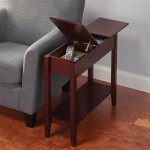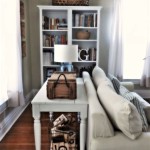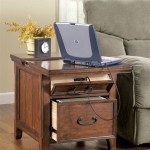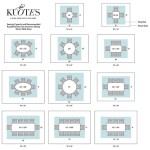The Versatility and Practicality of the 6-Seater Square Dining Table
The 6-seater square dining table represents a compelling intersection of style, functionality, and spatial efficiency in the modern home. Unlike its rectangular counterpart, a square table promotes a sense of intimacy and equality among diners, making it a popular choice for families and smaller gatherings. Its balanced dimensions often fit comfortably in a variety of dining room sizes, offering a unique blend of practicality and aesthetic appeal.
This type of dining table serves as a central gathering point, facilitating conversation and shared experiences. The square shape encourages eye contact and equal participation, fostering a more connected dining atmosphere. Beyond its social benefits, the 6-seater square dining table offers pragmatic advantages in terms of space management and design integration.
Space Optimization and Placement
One of the most significant benefits of a square dining table, particularly the 6-seater variety, is its efficient use of space. In comparison to rectangular tables, a square table occupies a more compact footprint, making it ideal for smaller dining rooms or open-plan living areas where space is at a premium. Its symmetrical shape allows for flexible placement against a wall, in a corner, or centered within a room, affording homeowners greater control over their spatial layout.
When considering placement, it is crucial to account for adequate clearance around the table. A minimum of 36 inches should be maintained between the table's edge and any walls or furniture to allow for comfortable movement and seating. This clearance ensures that individuals can easily pull out chairs and navigate the dining area without obstruction. In tighter spaces, considering chairs that can be tucked completely under the table when not in use can further optimize the available area.
The square shape also lends itself well to specific architectural features. For instance, a square table can be strategically positioned to mirror a square window or balance the geometry of a room with equally proportioned elements. This deliberate alignment can create a sense of visual harmony and enhance the overall aesthetic appeal of the dining space.
Material Selection and Durability Considerations
The material composition of a 6-seater square dining table profoundly influences its durability, aesthetic appeal, and maintenance requirements. Common materials include solid wood, wood veneer, glass, metal, and various synthetic composites. Each material possesses unique characteristics that cater to different needs and preferences.
Solid wood tables, such as those crafted from oak, maple, or walnut, are renowned for their inherent strength and timeless beauty. They offer exceptional durability and can withstand years of use with proper care. Solid wood tables often develop a rich patina over time, enhancing their character and value. However, solid wood is susceptible to changes in humidity and temperature, which can lead to warping or cracking if not properly maintained. Regular cleaning and the application of appropriate wood finishes are essential to preserving the integrity of solid wood tables.
Wood veneer tables offer a more cost-effective alternative to solid wood while still providing a similar aesthetic. Veneer consists of a thin layer of real wood adhered to a core material, such as plywood or particleboard. This construction method offers stability and resistance to warping, as the core material is less susceptible to environmental fluctuations. However, veneer is more susceptible to damage than solid wood, and repairs can be challenging. Care should be taken to avoid scratches and impacts that could chip or peel the veneer surface.
Glass-topped tables offer a modern and elegant aesthetic, allowing light to permeate the dining area and create a sense of spaciousness. Glass is relatively easy to clean and resistant to stains, but it can be prone to scratches and breakage. Tempered glass is a common choice for dining tables due to its increased strength and ability to shatter into small, relatively harmless pieces if broken. The base of a glass-topped table is typically constructed from metal or wood, providing structural support and contributing to the overall design aesthetic.
Metal tables, particularly those made from steel or iron, offer exceptional durability and a contemporary industrial aesthetic. Metal is resistant to scratches, dents, and moisture, making it a practical choice for households with children or active lifestyles. Metal tables are often powder-coated or finished with a protective coating to prevent rust and corrosion. However, metal can feel cold and impersonal, and may not be suitable for all interior design styles. The weight of metal tables can also make them difficult to move and reposition.
Synthetic composites, such as laminate or melamine, offer a budget-friendly and low-maintenance option for dining tables. These materials are resistant to stains, scratches, and moisture, making them ideal for busy households. Laminate and melamine tables are available in a wide range of colors and patterns, allowing for easy coordination with existing décor. However, synthetic composites lack the inherent beauty and character of natural materials, and they may not be as durable as solid wood or metal. Repairs to laminate or melamine surfaces can be difficult, and the lifespan of these tables may be shorter compared to their more expensive counterparts.
Design Styles and Aesthetic Integration
The 6-seater square dining table is available in a diverse array of design styles, ranging from traditional to contemporary. The choice of style should complement the overall décor of the dining room and reflect the homeowner's personal preferences. The table's design should also harmonize with the surrounding furniture and architectural elements to create a cohesive and visually appealing space.
Traditional dining tables often feature ornate details, such as carved legs, intricate moldings, and rich wood finishes. These tables evoke a sense of elegance and formality, and are typically paired with upholstered chairs in classic fabrics. Traditional styles often draw inspiration from historical periods, such as Victorian, Georgian, or French Provincial.
Contemporary dining tables embrace clean lines, minimalist forms, and a focus on functionality. These tables often feature sleek metal legs, glass tops, or streamlined wood designs. Contemporary styles prioritize simplicity and understated elegance, and are typically paired with chairs in modern materials, such as leather, plastic, or molded plywood. Contemporary designs often incorporate elements of Scandinavian, mid-century modern, or industrial aesthetics.
Rustic dining tables celebrate natural materials, such as reclaimed wood, rough-hewn timber, and distressed finishes. These tables exude a sense of warmth and authenticity, and are often paired with chairs in natural fabrics, such as linen or cotton. Rustic styles often draw inspiration from farmhouse, cottage, or lodge aesthetics.
Eclectic dining tables combine elements from different styles to create a unique and personalized look. These tables may feature a mix of materials, colors, and textures, reflecting the homeowner's individual taste and creativity. Eclectic styles require careful curation to ensure that the various elements harmonize and create a cohesive aesthetic. The key to successful eclectic design is to find a common thread that ties the different elements together, such as a shared color palette, a recurring motif, or a similar level of formality.
The selection of chairs to accompany a 6-seater square dining table is crucial for both comfort and aesthetic integration. The chairs should be proportionate to the table's size and height, and they should provide adequate support and cushioning. The style of the chairs should complement the table's design and the overall décor of the dining room. Consider factors such as seat height, back support, armrests, and upholstery material when selecting chairs. Mixing and matching chairs can create an eclectic and visually interesting look, but it is important to maintain a sense of balance and harmony. Ensuring that all chairs have a similar seat height or a shared design element can help to create a cohesive and stylish dining area.

Frederick 4 6 Seater Square Fliptop Dining Table

Rufford 4 6 Seater Square Extendable Dining Table

Extra Large 6ft Square Rustic Dining Table With Trestle Style Cross Leg Base Handmade From Reclaimed Wood 12 Seater Etsy

Churchgate Walcote 4 6 Seater Square Extending Dining Table

Eden Square 6 Seater Dining Table 120cm Ash Beige

Country Oak 180cm Extending Cross Leg Square Table And 6 Chester Timber Seat Chairs

Signature Extending Square Dining Table In Grey With 6 Chairs Elegant Furniture

Coxmoor 4 6 Seater Square Extendable Dining Table Solid Oak

Eden Square 6 Seater Dining Table 120cm Ash Beige

Salomon Square Table








